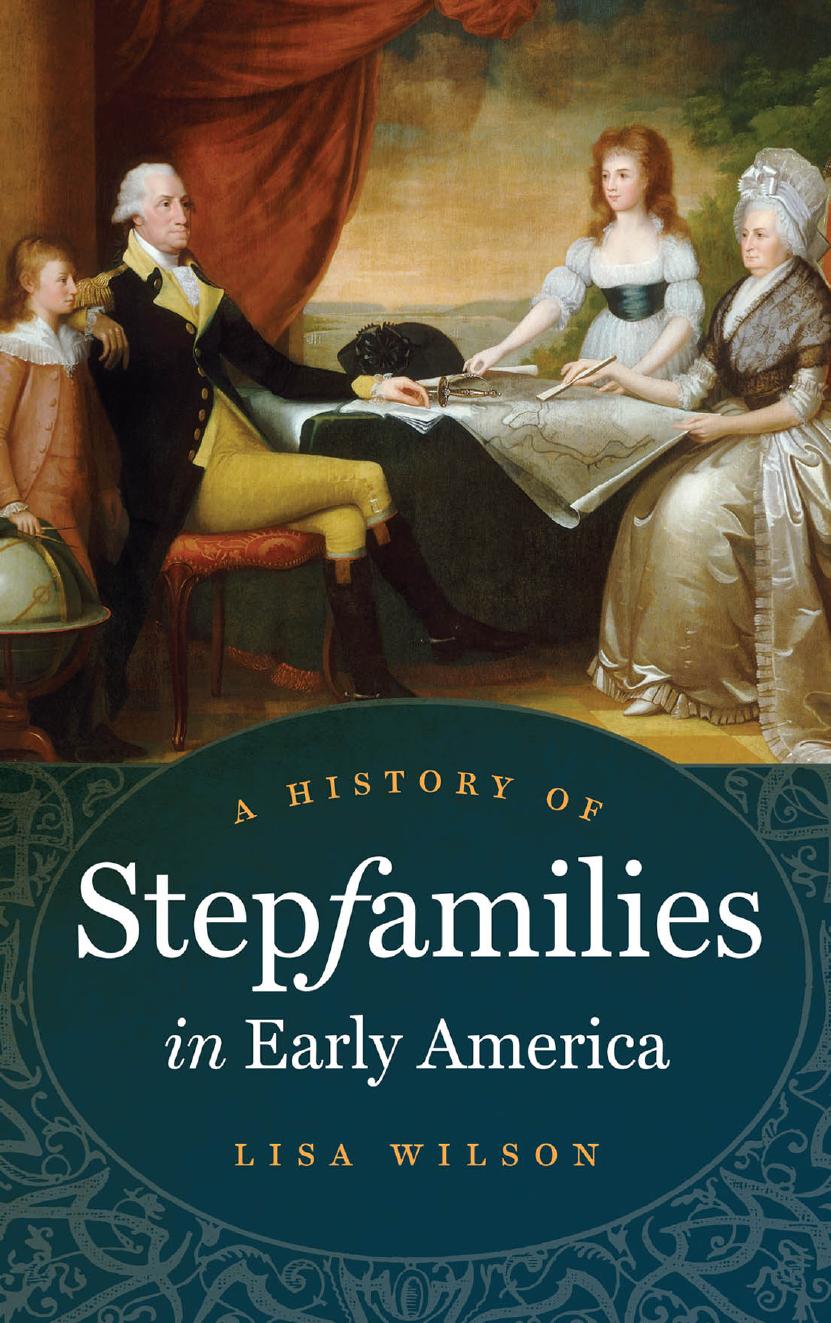A History of Stepfamilies in Early America by Lisa Wilson

Author:Lisa Wilson [Wilson, Lisa]
Language: eng
Format: epub, pdf
Tags: Americas, 19th Century, Social Science, Nonfiction, Gender Studies, History, Social & Cultural Studies, United States, Revolutionary Period (1775-1800)
ISBN: 9781469618432
Google: 0gqKrgEACAAJ
Publisher: The University of North Carolina Press
Published: 2014-10-06T04:00:00+00:00
William Blackstoneâs view of a fictional stepfamily from the legal perspective. William Blackstone, A Treatise on the Law of Descents in Fee-Simple (Oxford: Clarendon, 1759), appendix. Courtesy of the Linda Lear Center for Special Collections and Archives, Connecticut College, New London.
A stepfamily from an eighteenth-century childâs perspective. John Holyoke, Genealogy of the Family of the Holyokes, October 1746. Courtesy of the Phillips Library at the Peabody Essex Museum, Salem, Mass.
Like Adams, Blackstone suggested in his discussion of the hereditary rights associated with the Founders of All Souls College at Oxford that affection followed blood: âA decent and reasonable Regard will be paid to the FOUNDERâs Blood, so far as his Affection may be supposed to reach, and no farther.â He continued, âAffection and Regard for his real Kindred: And these Motives we must suppose to be greater or less, in proportion to the Nearness to, or Distance from him.â20 Blackstone and Adams assumed that affection and blood were inexorably linked.
Blackstone outlined his thinking visually with the help of a fictional family, the Stileses, using bows, clasped hands, squares, octagons, and circles to illustrate his inheritance principles. In Blackstoneâs scheme, half siblings were represented by half symbols.21 In 1746, twelve-year-old John Holyokeâa member of the Epes-Holyoke clanâconstructed a similar chart that depicted the differences between familial behavior and legal expectation. Unlike Blackstoneâs bows, which could be untied, and hands, which could be unclasped, Holyoke used bricks, mortar, and hooks to depict solid, enduring bonds. Though Holyoke represented only his blood relations, his half siblings were visually indistinguishable from his full brothers and sisters. In Holyokeâs view, his half siblings were as tightly bound to the family as his full siblings.22
Did blood ties determine the quality of sibling relationships? In legal practice did step and half siblings respond as Adams and others would predict? Did people think in terms of the worthiest blood? Looking closely at one Connecticut town suggests that the legal choices made by some stepfamilies (and to some extent by the courts) demonstrate a more complicated picture, following a pattern of flexibility and family survival rather than adherence to strict bloodline principles.
Saybrook was one of the first towns founded in what later became the colony of Connecticut, on the Long Island Sound at the mouth of the Connecticut River. It was unusual in that it tracked not only marriages but also remarriages. Using these records as well as other estate documents, I found 29 marriages (out of a total of 480) that clearly involved men who remarried and formed stepfamilies between 1647 and 1834. I was able to trace 19 of these men from marriage to death. The stories that emerge from these stepfamilies demonstrate that more than blood relationship motivated the brothers and sisters in these families.23
When Peabody Grinell (also spelled Paybody Greenell, Grenell, Grinel, and Grinnell) died in 1767, he did not leave a will, forcing the court to choose an administrator. The task commonly went to the deceasedâs eldest son, to his widow, or to both,
Download
A History of Stepfamilies in Early America by Lisa Wilson.pdf
This site does not store any files on its server. We only index and link to content provided by other sites. Please contact the content providers to delete copyright contents if any and email us, we'll remove relevant links or contents immediately.
Nudge - Improving Decisions about Health, Wealth, and Happiness by Thaler Sunstein(7622)
iGen by Jean M. Twenge(5368)
The Fire Next Time by James Baldwin(5252)
Adulting by Kelly Williams Brown(4489)
The Hacking of the American Mind by Robert H. Lustig(4319)
The Sports Rules Book by Human Kinetics(4302)
The Ethical Slut by Janet W. Hardy(4178)
Captivate by Vanessa Van Edwards(3796)
Mummy Knew by Lisa James(3637)
In a Sunburned Country by Bill Bryson(3486)
The Worm at the Core by Sheldon Solomon(3437)
Ants Among Elephants by Sujatha Gidla(3417)
The 48 laws of power by Robert Greene & Joost Elffers(3032)
Suicide: A Study in Sociology by Emile Durkheim(2975)
The Slow Fix: Solve Problems, Work Smarter, and Live Better In a World Addicted to Speed by Carl Honore(2950)
Humans of New York by Brandon Stanton(2835)
The Tipping Point by Malcolm Gladwell(2829)
Handbook of Forensic Sociology and Psychology by Stephen J. Morewitz & Mark L. Goldstein(2660)
The Happy Hooker by Xaviera Hollander(2656)
